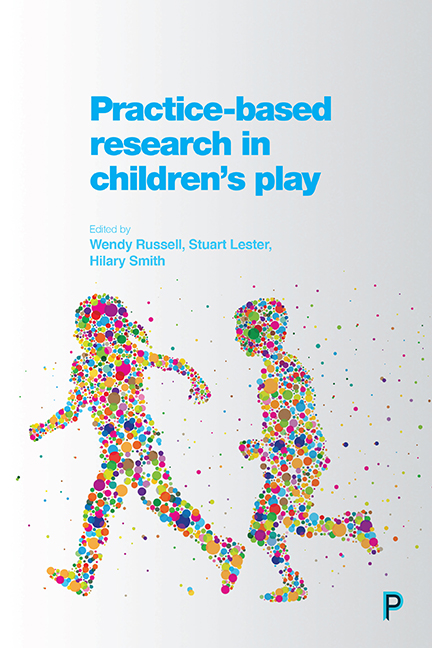Book contents
- Frontmatter
- Contents
- List of figures
- Notes on contributors
- Acknowledgements
- Foreword
- One Perspectives on play research: the practice-theory-research entanglement
- Part One Then and now: historical perspectives
- Part Two Here and there, this and that: spatial and creative perspectives
- Part Three Playfulness and wellbeing
- Closing thoughts
- Appendix: The Playwork Principles
- Index
Seven - Play and value: determining the values of a nature play setting
Published online by Cambridge University Press: 05 April 2022
- Frontmatter
- Contents
- List of figures
- Notes on contributors
- Acknowledgements
- Foreword
- One Perspectives on play research: the practice-theory-research entanglement
- Part One Then and now: historical perspectives
- Part Two Here and there, this and that: spatial and creative perspectives
- Part Three Playfulness and wellbeing
- Closing thoughts
- Appendix: The Playwork Principles
- Index
Summary
Introduction
The mission of many zoos and aquaria is to inspire people to make a difference in the conservation of wildlife and wild places and provide opportunities for families to connect with nature. For many families, nature play can begin at accredited zoos and aquaria (AZA), affording AZA institutions the possibility to become leaders in their community for the nature play movement (Ogden, 2015). Zoos and aquaria are beginning to feature outdoor play spaces within their institutions, although they are diverse in their design and approach to nature play. The zoo play setting in this study was designed specifically to support nature play by offering a rich and varied play environment intended to appeal to all ages. The play setting aims to engage the senses, inspire exploration, encourage risk taking and support openness and change. It is a place of difference within the zoo, providing opportunities for running, climbing, building forts, making mud pies, splashing in a stream, or just messing about.
Extensive research speaks to the benefits and value of play, outdoor environments and managed play provisions for children, their families and community (Hart, 2002; Louv, 2005; Chawla, 2006; 2007; Kuo, 2010). Managed play provision can enhance and extend play opportunities by being an example of what might be possible in public spaces of all shapes and sizes (Beunderman, 2010) and provides circumstances for adults to take a supportive role, allowing children to play as freely as possible. However, in supporting free play, tensions can develop between those who encourage the openness of play and those who believe that children's play should be tightly managed or outcome based. Less literature explores the organisational management of a large institution and the perceived values of a segregated space for play within the organisation (like a zoo). This study focuses on an organisation's stakeholders (zoo management and staff) by exploring their opinions on the purpose and value of a nature play setting within a zoo in the United States.
Supporting openness and change
Many adults think of a play space as an adult-designed play environment often identified with other terms such as playground or play setting, implying a dedicated and segregated environment for play, with specific physical design features. But as Ward (1979) notes, children will play anywhere and with anything and playing is determined by more than its physical setting.
- Type
- Chapter
- Information
- Practice-Based Research in Children's Play , pp. 113 - 130Publisher: Bristol University PressPrint publication year: 2017

